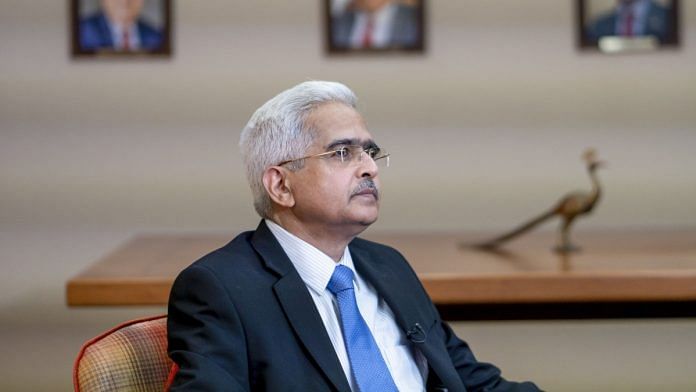Mumbai: The Reserve Bank of India will likely keep its key lending rate at a record low for a ninth straight meeting, with a new virus variant seen as the latest threat to the central bank’s efforts to return policy to normal.
All 28 economists surveyed by Bloomberg as of Monday expect the six-member monetary policy committee to leave the repurchase rate unchanged at 4% on Wednesday. Even bets on the reverse repurchase rate — the level at which the RBI absorbs cash from banks — are heavily skewed toward a hold, underlining the difficulty it faces in containing price pressures while supporting economic growth.
“Since the pandemic, the RBI has done exactly this balancing act, and the pandemic is not yet over,” said Soumya Kanti Ghosh, chief economist at State Bank of India, the country’s biggest state-run lender. “Against this background, delaying normalization measures is prudent in the current situation.”
Also read: RBI retains repo rate at 4%, keeps it unchanged for 8th time in a row
Normalization steps
Governor Shaktikanta Das is scheduled to announce the MPC’s decision through a webcast at 10 a.m. in Mumbai on Wednesday. Here’s what else to watch for in his speech:
Traders will still be looking for guidance on the inevitable return of policy to pre-pandemic settings, with markets pricing in a two-stage hike in the reverse repo rate, starting Wednesday. Only seven of the 24 economists surveyed see that happening, with others predicting no change.
Shorter money market rates and front-end yields have already moved up in recent weeks as the monetary authority increased cash absorption by raising both the quantum and duration of variable rate reverse repo auctions. The liquidity absorption steps coincided with the RBI halting its bond purchase program in the October policy, which signaled the start of tapering pandemic-era stimulus.
Expectations of a hike are “baked in swaps and bonds levels,” said Naveen Singh, executive vice president and head of trading at ICICI Securities Primary Dealership Ltd. “Given the RBI has already done proxy normalization through VRRR, it’s a logical step to raise reverse repo rate irrespective of omicron’s spread.”
The sovereign yield curve in India has been the steepest in a decade, largely due to the record excess banking liquidity crashing short-term rates. The central bank’s actions in removing excess cash and halting bond purchases have in turn pushed up cut-off yields in recent bond auctions, which have resulted in higher market rates, according to Barclays Plc.
Inflationary concerns
Inflation, repeatedly described by Das as transitory, is once again on the march toward the upper end of the RBI’s 2%-6% target range. Rising vegetable prices, particularly that of tomatoes, and a waning favorable base effect may threaten the central bank’s forecast of 5.3% headline price-growth for the fiscal year ending March.
Concerns over price pressures would definitely be a topic of interest, especially in the backdrop of Federal Reserve Chairman Jerome Powell’s comments that it was time the Fed retired the description of high inflation as “transitory.” But that alone may not be enough to nudge Indian policy makers into action just yet.
Five of the six MPC members were, as of October, still in favor of keeping policy stance accommodative to ward off risks from global developments. With the omicron variant spreading fast, it could be just the reason the RBI needs to stand pat.
“The world is waiting for more data to understand the potential impact and efficacy of the existing vaccines against the omicron variant,” said Kunal Kundu, an economist with Societe Generale GSC Pvt. in Bengaluru. “If RBI too perceives it as a threat to the nascent recovery, it may want to put on hold plans for policy normalization.”
Growth risks
While latest high-frequency indicators from purchasing managers’ surveys to consumption-tax data show Asia’s third-largest economy has momentum, those gains could be squandered should risks from omicron’s rapid spread materialize.
For now, the RBI is expected to retain its growth forecast at 9.5% for the fiscal year ending March, while flagging downside risks.
“Headwinds from softening external demand, global supply bottlenecks, inflationary pressures and expected Federal Reserve tapering are likely to temper the strength of the rebound,” said Bloomberg economist Abhishek Gupta, who recently raised the growth forecast for fiscal 2022 to 8.9% from 7.8%. –Bloomberg
Also read: RBI could hike rates from next fiscal on inflation, Goldman Sachs predicts






